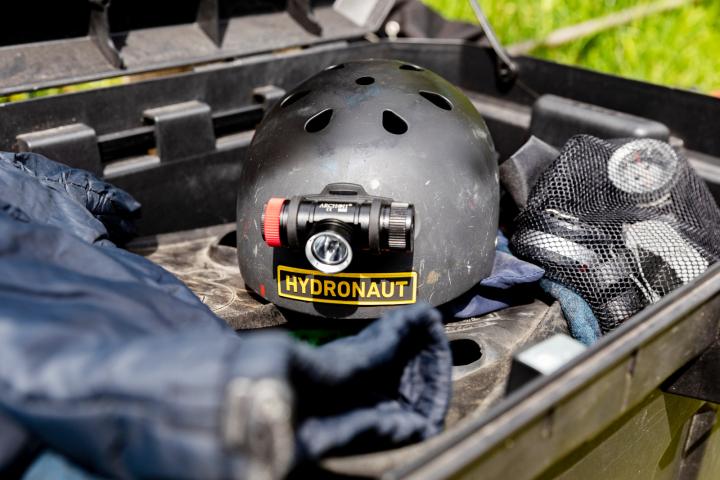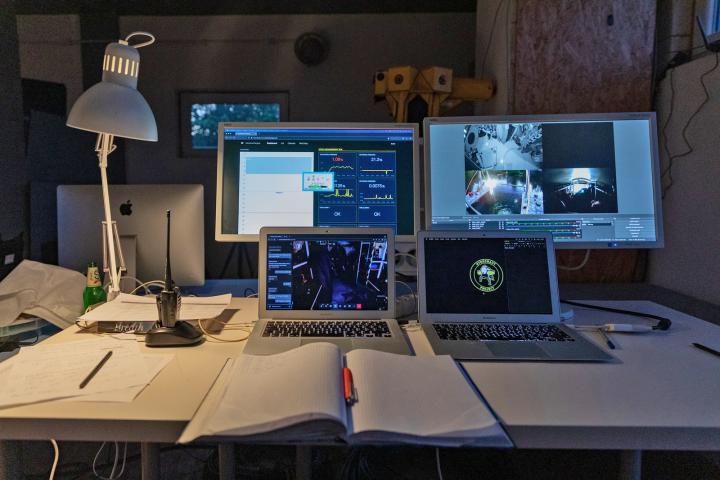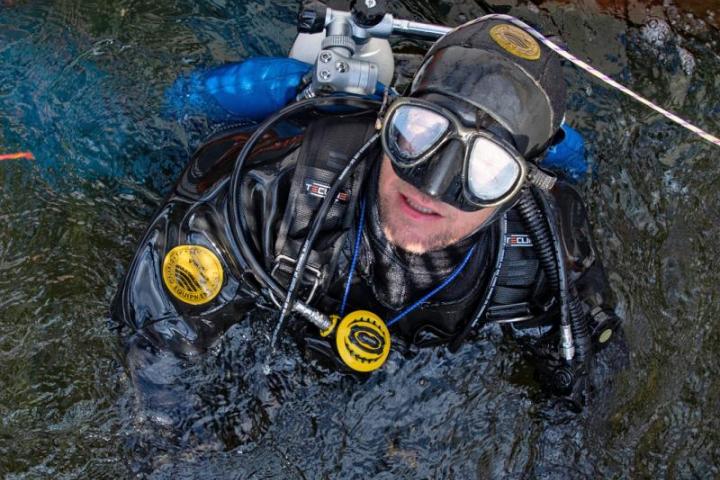
Project No. TL05000228 is currently underway and is supported by the Technology Agency of the Czech Republic. This research is carried out by the main investigator, the Faculty of Mechanical Engineering, CTU in Prague and the Department of Psychology, Faculty of Arts, Palacký University in Olomouc.
The project focuses on the development of a methodology for research on the impact of extreme confined isolated environments on human psyche, team dynamics, team communication and related physiological processes. In order to make this project possible, a collaboration with 1st Cloud Republic a.s. and the Hydronaut deep-sea laboratory was established. These companies offer the perfect SW and HW facilities to bring research of this type up to the current state of knowledge and realized analogue missions in the world. 1st Cloud Republic a.s. supplies the Common Tongue communication platform enabling efficient and fast communication between all stakeholders. The Hydronaut project is a unique deep-sea laboratory for human survival research in artificial extreme conditions, which is unparalleled in Czech science. In Jesenné in the Železnobrod region, it is already on its third mission.
From 19 August, the quarry area will be transformed into a research centre for seven days. In cooperation with universities, teams have prepared the Diana III scientific mission, which will reveal the possibilities of human survival in the extreme conditions of long-duration spaceflight.
Diana loosely replicates the Artemis mission, i.e. the upcoming human return to the moon, which NASA plans to launch in 2022. Not only the scenario of the mission is adapted to this, but also its scientific content.
The control tower, which is analogous to the Houston Space Flight Control Center, will be located in the quarry area. From here, the biometric data of the habitat crew, the internal environment and the technical condition of the entire facility will be continuously monitored.
University teams will also be based there, in charge of research, control and crew tasking.
The mothership, which orbits the moon during spaceflight, will be simulated by a station floating on the surface of a quarry.
The three-person crew living cell, equipped in the same manner as a deep space laboratory and mounted on floats, will not have shore access for the duration of the mission. It will only be possible to communicate with the control center and habitat using the ship's own online Common Tongue onboard system.
An analogy of the Apollo Eagle lander is the DeepLab's own H03 Naty lab. The 35-tonne structure will be submerged at a depth of about ten metres. Its power and air supply will be provided from shore.
The three-man crew of the habitation module will perform scientific tasks. Three deep-sea ascents are also planned (simulating a lunar surface walk). Throughout the mission, i.e. while in a high-pressure and humidity environment, each crew member will be monitored by biometric sensors designed and manufactured by experts from the Department of Medical Sciences and Population Protection of the Faculty of Biomedical Engineering. The actual environment inside the habitat will be monitored throughout the mission by a monitoring control panel developed and manufactured at the Faculty of Mechanical Engineering of the Czech Technical University in Prague. This includes monitoring pressure, temperature, humidity, atmospheric composition and the status of the on-board power supply.
The main goal of the project, which is implemented by the Department of Psychology of the Faculty of Arts, is to design an instrument to investigate the influence of personality characteristics and external factors on team dynamics during a long-term stay in an isolated, confined and extreme environment (ICE). The result will be an instrument that will allow screening of individuals and teams in pre-selection and training during a long-term stay in ICE. The unique instrument will allow for the examination of the effects of personality characteristics and external factors on work team behavior in relation to psychophysiological processes. Station designer, diver and participant in two previous missions Matyáš Šanda will also work with the psychologists.
The habitat will also be used for research on plant germination in an environment of increased pressure, prepared by the Czech University of Life Sciences.
The decompression exit from the station necessary for a safe return should take the crew about two hours. Several doctors, experts in hyperbaric medicine (Faculty of Medicine, University of Ostrava) and a team of rescuers from the Liberec Water Rescue Service will take care of safety. A mobile barochamber will be placed in the quarry at all times, serving as an insurance in case the crew has to leave the habitat without a safe decompression procedure.
Once the actual mission is completed, a follow-up phase will be initiated to evaluate all the data collected. The process will take about three quarters of a year. The methodology developed can be used for the selection of crews for long-duration space flights, as well as for crews for scientific stations in Antarctica, rescue teams, etc.


